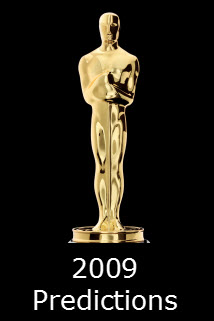The Girl With the Dragon Tattoo (Män som hatar kvinnor) (2010)


Content by Tony Macklin. Originally published on April 30, 2010 @ tonymacklin.net.
The Girl with the Dragon Tattoo is a brutal movie. It's also compelling and absorbing.
It takes one on a journey down the icy roads to hell, with a dogged, investigative journalist and an avenging punk angel -- an odd couple par excellence.
Based on the novel by Swedish writer Stieg Larsson -- originally titled Men Who Hate Women -- it's a potent adaptation.
2009-2010 has been a special, fertile time for memorable foreign films -- The White Ribbon, Mother, A Prophet, and The Girl with the Dragon Tattoo. These films are unique and thought-provoking. It's been a long time since such a group of brilliant foreign films have made it to mainstream American Theaters that show art films.
The Girl with the Dragon Tattoo is the story of Mikael Blomkvist (Michael Nyquist), a disgraced journalist who loses a libel case against a big corporation and is sentenced to jail time.
Also struggling to survive is Lisbeth Salander (Noomi Rapace), a girl who is her own person and has tattoos and piercings to emphasize that. Lisbeth is an enigmatic cyber-hacker who works for a security company. She is silently willful, wary, alienated, and fiercely independent.
But her independence is taken away from her when she is assigned to a guardian who begins to brutalize her. These are the most stunning sequences in a movie about a world of psychological damage.
In the interim before he is jailed, Mikael is offered a job by Henrik Vanger (Sven-Bertil Taube), head of a Swedish industrial empire, who wants Mikael to find out who murdered his niece 36 years ago. He thinks it was one of his large family who live on their isolated island. Her disappearance has haunted him ever since.
Reluctantly Mikael accepts thinking there is no case, but eventually he becomes obsessed. He enlists the recalcitrant Lisbeth -- who once cyber-tracked him -- to join him on his quest. It leads to danger and horror.
Swedish director Niels Arden Oplev has captured a remote world that is snowy, frigid, and bleak, with shafts of sunlight. It's an atmosphere of frozen, glaring dread.
Oplev has made a film of faces, evocative expressions -- puzzled, thoughtful, grim -- that hide thwarted ideals and torn psyches.
His movie at times may remind one of Blow-Up (1966) and The Silence of the Lambs (1991). Both were gripping adaptations of literature.
One of the haunting ironies of literature is posthumous publication. It's poignant when writers aren't alive to experience the success of their work.
There's a rich library of works published after their authors had died -- e.g., most of the poems of Emily Dickinson, Kafka's The Trial, Jane Austen's Persuasion, and Pulitzer Prize-winning novels A Death in the Family by James Agee and A Confederacy of Dunces by John Kennedy Toole.
And, of course, there was Vincent Van Gogh.
Stieg Larsson joins the company of those who never saw the success of their inspiration. Larsson died suddenly at age 50 in 2004, before his Millennium trilogy (with its Dragon Tattoo novel) was published. Larsson's three novels have sold 21 million copies worldwide. Larsson never knew he was the second best seller worldwide in 2008.
A further great irony is that after his death his estate -- including the rights to his books -- was taken from his partner Eva, to whom he had willed it -- and granted to his father and brother. He would have detested that. But such is the warped world of Stieg Larsson.
As with Thomas Harris's The Silence of the Lambs, one should read the novel as well as see the film. The books and their movies differ.
The movie The Girl with the Dragon Tattoo is more stylish than the book, but Larsson tells a better story, is less contrived, and develops his characters more.
The movie amplifies the brutality, but simplifies the relationships and cuts out key characters. Mikael's daughter, who comes up with a major clue, is cut; her clue is given by Lisbeth in the movie.
Mikael's several bed partners are limited to one. His romantic relationship with his magazine co-founder is diminished to a few looks.
At least the sadism of the dead cat is left out of the movie.
The book, because of its details, has a fascination the movie doesn't have. Mikael has a motivation to work for Henrik that is not in the movie.
There's also a scene added by the two screenwriters in which Lisbeth confronts the killer near the end that is not Larsson. In fact, he probably would have thought it different from what he was after.
But Larsson would have been smitten with Noomi Rapace, who brings his character Lisbeth to intoxicating life.
Stieg Larsson -- the author of Men Who Hate Women -- himself loved them. Especially those with Dragon Tattoos.















